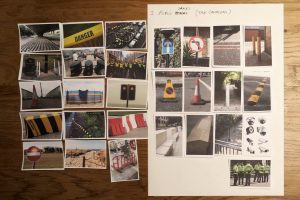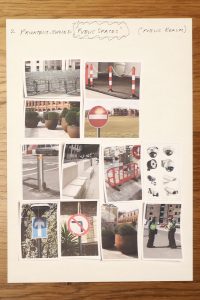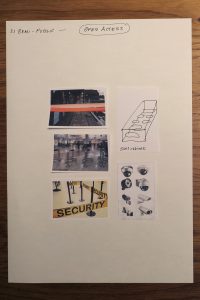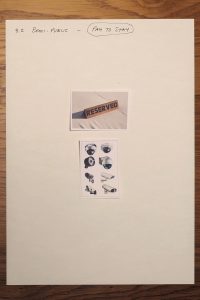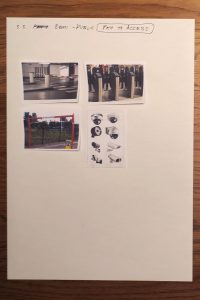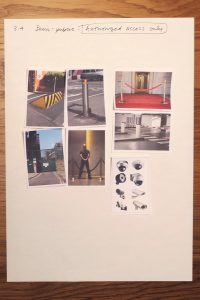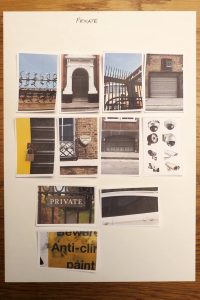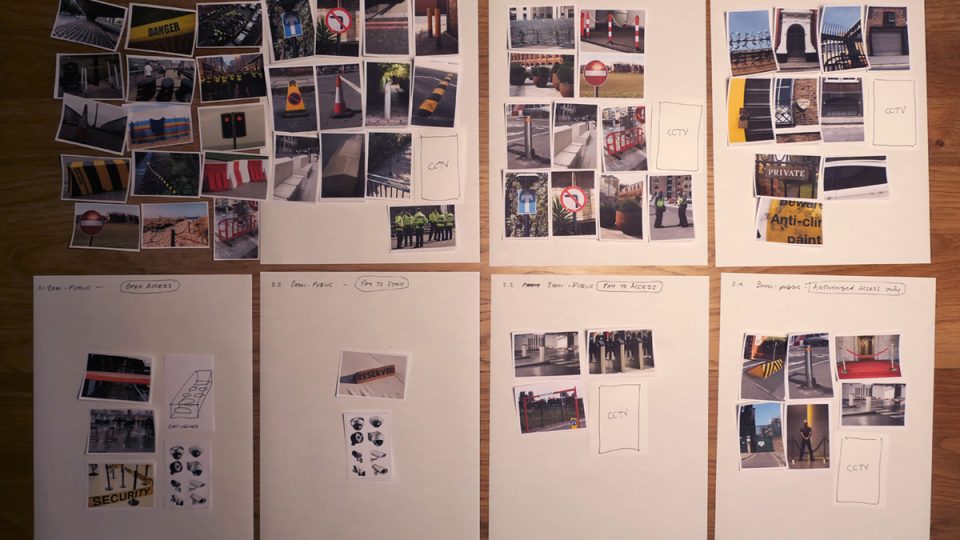
Thought experiment on the types of spaces we share
I’m revisiting the overall structure of my paper with this thought experiment. Instead of categorising how we experience the obstructions themselves, this is an investigation into the 4 main categories of spaces that we share: 3 ‘public’ and the 4th being private.
I redistributed the pictures from my draft paper into the categories below to see what would happen. What quickly became clear is that the majority of pictures belonged to category (1), public spaces; cctv featured in every category; and in the majority of cases these obstructions proliferated at the edges – where one space meets another.
